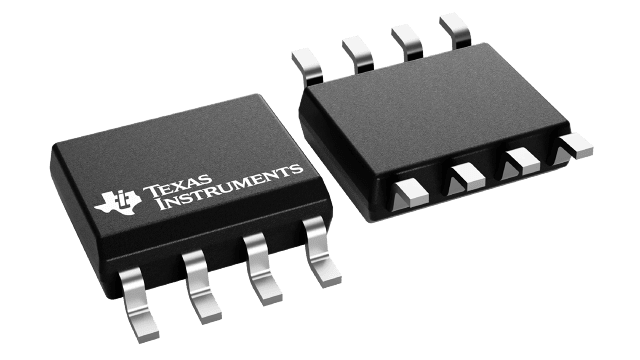Gehäuseinformationen
| Gehäuse | Pins SOIC (D) | 8 |
| Betriebstemperaturbereich (°C) -40 to 125 |
| Gehäusemenge | Träger 2.500 | LARGE T&R |
Merkmale von OPA2365-Q1
- Qualified for Automotive Applications
- AEC-Q100 Qualified with the Following Results:
- Device Temperature Grade 1: –40°C to 125°C Ambient Operating Temperature Range
- Device HBM ESD Classification Level H2
- Device CDM ESD Classification Level C3B
- OPA2365-Q1 Functional Safety-Capable:
- Documentation Available to Aid Functional Safety System Design
- Gain Bandwidth: 50 MHz
- Zero-Crossover Distortion Topology
- Excellent THD+N: 0.0004%
- CMRR: 100 dB (Minimum)
- Rail-to-Rail Input and Output
- Input 100 mV Beyond Supply Rail
- Low Noise: 4.5 nV/√ Hz at 100 kHz
- Slew Rate: 25 V/µs
- Fast Settling: 0.3 µs to 0.01%
- Precision
- Low Offset: 100 µV
- Low Input Bias Current: 0.2 pA
- 2.2-V to 5.5-V Operation
Beschreibung von OPA2365-Q1
The OPAx365-Q1 zero-crossover family, rail-to-rail, high-performance, CMOS operational amplifiers are optimized for very low voltage, single-supply applications. Rail-to-rail input/output, low noise (4.5 nV/√ Hz) and high speed operation (50-MHz gain bandwidth) make these devices ideal for driving sampling data converters (such as the ADS7822-Q1 or the ADS1115-Q1), specifically in short to mid-range radar applications. The OPAx356-Q1 family of operational amplifiers are also well-suited for HEV/EV and Powertrain applications in DC-DC converters and as transmission control in engine control units.
Special features include an excellent common-mode rejection ratio (CMRR), no input stage crossover distortion, high input impedance, and rail-to-rail input and output swing. The input common-mode range includes both the negative and positive supplies. The output voltage swing is within 10 mV of the rails.
The OPA365-Q1 (single version) is available in the 5-pin SOT-23 package. The OPA2365-Q1 (dual version) is available in the 8-pin SOIC package. All versions are specified for operation from −40°C to 125°C. Single and dual versions have identical specifications for maximum design flexibility.
